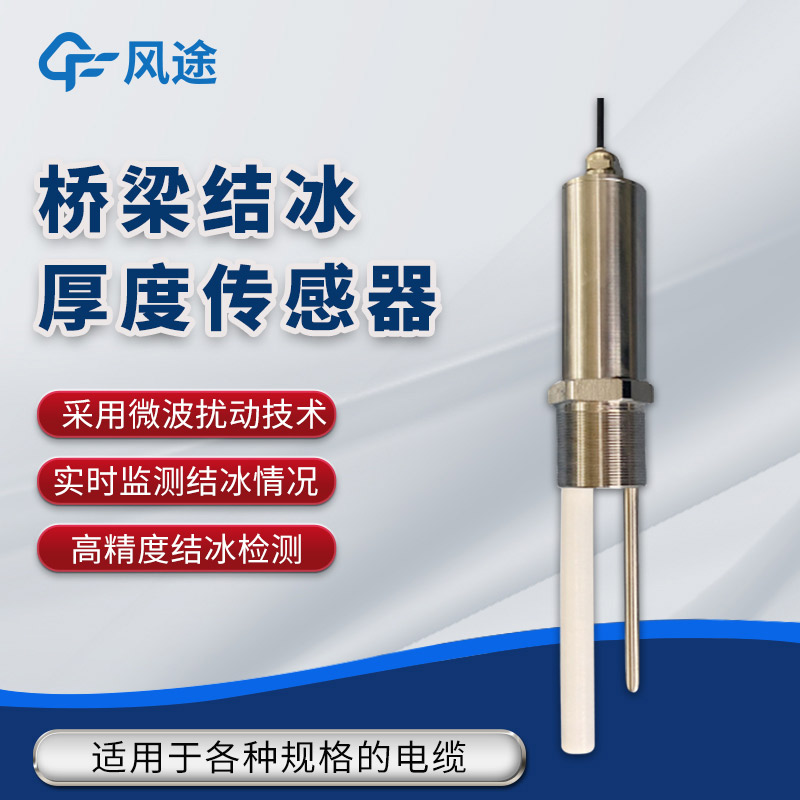Tianyi Sensor IOT Technology Co., Ltd
Sales Manager:Ms. Emily Wang
Cel,Whatsapp,Wechat:+86 15898932201
Email:info@fengtutec.com
Add:No. 155 Optoelectronic Industry Accelerator, Gaoxin District, Weifang, Shandong, China

Sales Manager:Ms. Emily Wang
Cel,Whatsapp,Wechat:+86 15898932201
Email:info@fengtutec.com
Add:No. 155 Optoelectronic Industry Accelerator, Gaoxin District, Weifang, Shandong, China
time:2025-04-09 09:43:36 source:Weather Station viewed:3 time
Here's a little bit of knowledge: Bridges actually freeze more easily than road surfaces.
Why is that?
From the perspective of heat dissipation, the temperature difference between a bridge deck and an ordinary road surface is quite understandable. The road surface is directly built on the ground, with its bottom and both sides surrounded by soil, and only the top is exposed to the air. In contrast, a bridge is suspended, and its entire structure, including the bottom and sides, is in direct contact with the air. The fluidity of the air will accelerate the heat dissipation through convection. Since the bridge deck has a larger exposed area, it loses heat more quickly, and thus its temperature is naturally lower.
Let's consider the thermal conductivity of the materials. An ordinary road surface usually uses asphalt concrete, and its thermal conductivity coefficient is 1.05, which is at a relatively low level. However, steel structures and reinforced concrete are widely used in bridge structures, and the thermal conductivity coefficient of the latter is as high as 1.74. This means that the bridge materials have a stronger thermal conductivity, and heat is more easily conducted into the air, further exacerbating the heat loss of the bridge deck.
There is another key point: the heat preservation effect of the earth. Although the specific heat capacity of air is slightly higher than that of dry soil, the mass of soil is much greater than that of air, and its thermal conductivity is poor (for example, the thermal conductivity coefficient of construction sand is only 0.58). When heat is dissipated from the soil, only the shallow layer will drop below 0°C along with the decrease in air temperature, while the deeper soil can still remain above 0°C. This temperature gradient makes the soil beneath the road surface like a huge "thermal insulation blanket", continuously transferring heat to the road surface and preventing the road surface temperature from dropping too low.
In contrast, the bridge deck has no such "geothermal support" at all. Once the heat is dissipated, it cannot be replenished, and the temperature drops even faster. This is exactly why, under the same air temperature conditions, the temperature of the bridge deck is lower than that of an ordinary road surface, and it is more likely to freeze.
So, when driving in winter, especially when passing through bridges, you must be extra careful. The risk of the bridge deck freezing is much higher than that of an ordinary road surface!
The icing of bridges poses serious potential hazards to traffic safety. We can use a Bridge icing sensor to prevent the risk of bridge icing.
Install icing sensors at the key parts of the bridge, such as the bridge deck, bridge piers, bridge expansion joints, and other positions that are prone to icing. Due to their structural characteristics and degree of exposure, these parts are more vulnerable to the impact of low-temperature environments and are more likely to freeze.
The sensor launched by TianYisensor uses microwave disturbance technology to conduct icing monitoring. Based on the differences in the feedback signals of microwave disturbance signals in different substances such as ice, water, and air, it can achieve precise monitoring of the icing information in the sensitive area of the sensor. By analyzing the strength of the signals and combining with the distribution information of icing in the sensitive area of the sensor, it can accurately calculate the thickness of the ice. According to different ice thicknesses, the icing alarm value can be flexibly set. Once the set threshold is reached, the de-icing system can be quickly activated, gaining precious time for de-icing the bridge.
The icing detection range is between 0.5mm and 50mm. It can detect a minimum icing thickness of 0.5mm, with a resolution of 0.1mm and a maximum detection thickness of 50mm. The icing alarm thickness value is adjustable between 0.5mm and 50mm, which can meet the diverse needs of different bridges for icing monitoring.

Facility agriculture refers to an agricultural form that utilizes new production equipment, modern agricultural engineering technologies, and management techniques to regulate environmental parameter factors such as temperature, light, water, soil, air, and fertilizer for the growth of plants like v...
Recommend Several Excellent Water Quality MonitorsI. Portable Multi-parameter Detector (FT-SS07)It covers all parameters and supports the detection of 12 parameters such as water temperature, conductivity, pH, ammonia nitrogen, dissolved oxygen, COD, turbidity, etc. It adopts all-digital elect...
Scenic areas pay particular attention to negative oxygen ions because the concentration of negative oxygen ions is an important indicator for measuring the quality of air and the ecological environment. Negative oxygen ions have the functions of purifying the air, improving cardiopulmonary function,...
Anemometer for drones, the ultrasonic anemometer is a high - precision meteorological monitoring device designed based on the principle of ultrasonic resonance. It is specifically developed for the low - altitude environmental monitoring needs of small drones and unmanned platforms. Its core technol...